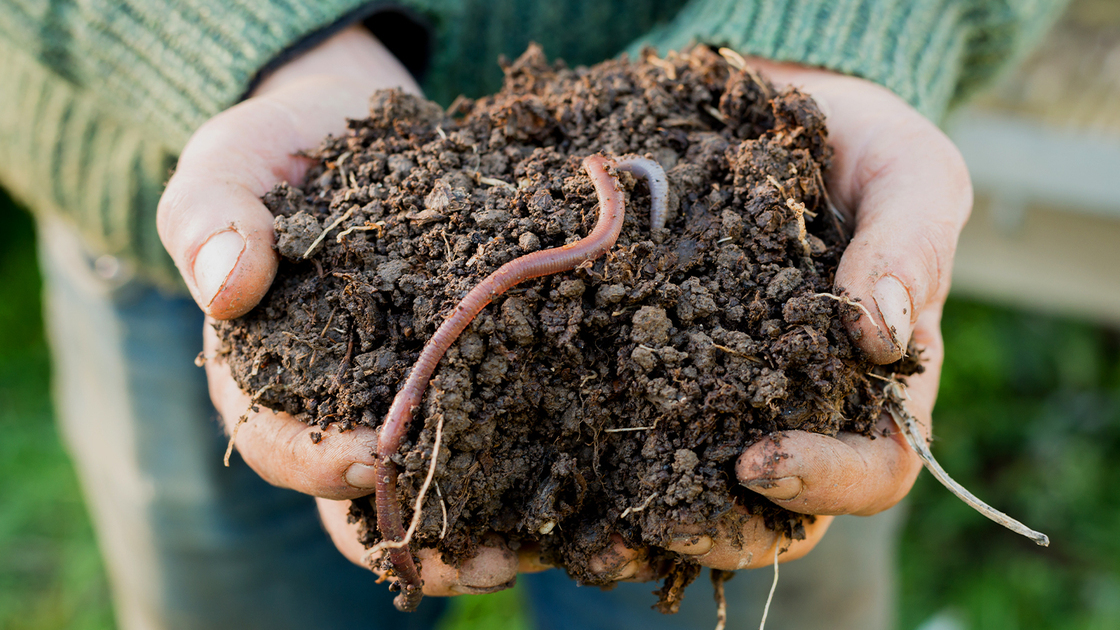One of the strangest and, in my opinion, most repulsive looking creatures actually plays a vital role in the health of all mankind. It is foundational to the health of Earth’s soil and therefore the nutrient content of the plants and animals we eat. It is “nature’s plow,” as one scientist put it. This creature is the unassuming earthworm.
At first glance, the earthworm may look like it has no purpose at all except to cause its onlookers to grimace and shudder in disgust. Their long, thin and squishy physique isn’t necessarily the most pleasant thing to look at, especially as they wriggle and writhe away on your pavement. But there is more to the earthworm than meets the eye.
They have many jobs that help nourish the soil. One is burrowing, when the worms dig small tunnels in the ground, allowing more water to penetrate the soil while releasing carbon dioxide into the air. This creates the right balance of water and carbon dioxide in the soil, which is necessary for photosynthesis to take place in plants.
By burrowing, earthworms also improve the soil structure by creating more space for water on the surface to soak into the soil, which reduces the possibilities of water run-off or flooding. It also creates more routes for plant roots to grow deeper into the soil. As a worm burrows, it mixes and evenly distributes soil components, such as minerals, nutrients, dead organic matter and other micro-organisms, providing a balanced environment for the plants.
Most minerals and nutrients in the soil are locked away from plant absorption in their raw form. But earthworms can also help in this respect. They eat dead organic matter in the soil such as dead plants, animals, fungi and bacteria. These get broken down and digested by the earthworm, then released as waste called castings. This process transforms the minerals and nutrients from the dead organic matter into a form that can be easily assimilated by plants.
Research has shown that the casts of earthworms have over 60 micronutrients and trace minerals. They can contain five times more nitrogen, seven times more phosphorus, and a thousand times more beneficial bacteria than the original soil! The earthworm’s digestive process ensures that the soil does not get depleted of its minerals and nutrients after plants have soaked up the nutrients they need. It is a constant cycle that replenishes the soil. So the more earthworms, the better! Research shows that 100 to 500 earthworms can live beneath nine square feet of grassland or forest soil.
These little creatures are able to do so much because of the way God created their bodies. Earthworms are invertebrates with bodies divided into approximately 100-150 segments in total. Each segment has muscles and bristles on the outside of their body called setae, which enables them to crawl and burrow deep into the soil. They do not have eyes, so they use their skin to find their way around. They have receptors in their skin that are sensitive to light, so as long as they are in the soil, they will survive and thrive.
They also eat about half their body weight every day. The food goes in their mouth, through the pharynx, down their esophagus, then to the crop before going to the gizzard. Inside the thick muscular walls of the gizzard are the stones that the earthworm might have eaten, which help grind the food into a finer substance. From there, the nutrients are absorbed by the blood vessels in their intestinal wall to be distributed to the rest of their body. The rest is released as castings to give the soil the nutrients it needs.
Earthworms can even regenerate when bisected; it depends on which segment is cut and how clean the cut is. This is possible because the cut activates stem cells, which can develop into other cells as replacement parts for the severed worm. This way, they don’t die off when we accidentally cut them in two when gardening; they can continue their vital work.
By paying attention to these small details, God reveals how much he cares for us and our health. He built in a perfect system through the earthworms to ensure the soil that we get our food from remains dense with nutrients so we ourselves can be nourished. Like much of God’s creation, He created earthworms to benefit mankind. God is our Sustainer, and earthworms are one way He accomplishes that. God created every creeping thing on the earth—including earthworms—and He saw that it was very good (Genesis 1:24-25, 31).
So instead of shuddering in disgust when beholding the health-sustaining earthworm, thank God!
